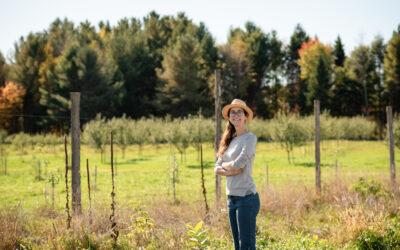ALUS coordinators showcase nature-based solutions at different points in a project’s lifecycle.
In 2021, ALUS introduced the Before and After Photo Contest with the aim of encouraging ALUS communities to demonstrate the magnitude of their ecosystem projects. Recognizing the incredible, hard work that ALUS coordinators devote to their local ALUS program, they are awarded prizes for the best photos submitted. Prizes of $600 for first place, $300 for second place and $100 for third place celebrate the coordinator’s incredible efforts to photograph projects!
This year ALUS invited program coordinators to submit photos from different timeframes: before and after one year; before and after two to five years; before and after five years; and older. In the contest’s second year, there were a ton of excellent submissions.
This year’s winners include ALUS Assiniboine West (Colleen Cuvlier & Elisha Johnson-Jensen), ALUS Red Deer County (Ken Lewis) and ALUS WUQWATR (Nicole Moffat & Nathan Avery). Explore their projects in the descriptions below.
Discover these exciting projects and the positive impacts ALUS participants have on the landscapes around them. Although it often takes time for sites to naturally mature, these images illustrate the possibilities of nature-based solutions to benefit the agricultural landscape and the environment.
Explore these three projects put in place by ALUS Assiniboine West (Colleen Cuvlier & Elisha Johnson-Jensen), ALUS Red Deer County (Ken Lewis) and ALUS WUQWATR (Nicole Moffat & Nathan Avery).
Thank you to all those who participated in 2022 and best of luck to those who submit in 2023!
2022 Before & After Photo Contest
Winning Submissions and Photo Descriptions
ALUS Assiniboine West, MB (Colleen Cuvlier & Elisha Johnson-Jensen)
ALUS Red Deer County, AB (Ken Lewis)
ALUS WUQWATR, SK (Nicole Moffat & Nathan Avery)
These photos show one of the oldest projects in ALUS WUQWATR, a nearly ten-year-old shelterbelt. In 2013, ALUS participant Larry Grant planted this shelterbelt as part of a project to enhance on-field wetlands. Today, the shelterbelt is well-developed, helping control water as it moves across the land and preserving the integrity of adjacent cropland by preventing flooding.



